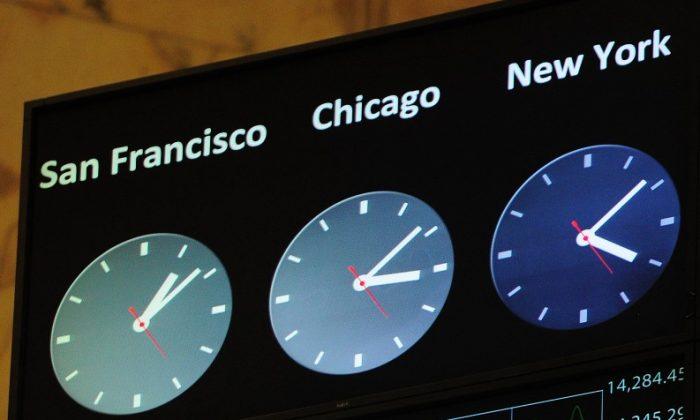Wall Street had to wait a long time to celebrate another mile stone. The Dow Jones Industrial Average hit an all-time high of 14,253.77 March 5 after five and a half years of waiting.
“The party is going on, money is being pumped in, supply/demand is good. I think this party can go on for a while,” billionaire and former hedge fund manager Stanley Druckenmiller told CNBC March 5.
The Dow was up 0.89 percent or 126 points March 5 to take out the old closing high of 14,164.5 reached on Oct. 9, 2007, and the intraday high of 14,198.10 reached on Oct. 11, 2007. It is up 9 percent year-to-date.
The best performing stocks since the last all-time high, according to an analysis by Zerohedge are:
• IBM
• McDonalds
• Travelers
• Home Depot
• Chevron
The bottom five are:
• AIG
• Citigroup
• General Motors
• Hewlett Packard
• Bank of America
According to Druckenmiller, the driver of this market is also different than last time: “The Fed is printing a lot of money. They are forcing people into markets. You shouldn’t be buying securities because you’re forced to buy them by zero rates. You should buy them because you think they’re great value. They’re great value only relative to zero interest rates. They’re not great value on an absolute basis,” he said in the CNBC interview.
After the collapse of the housing bubble in 2008, and a subsequent crash in stock prices, the Federal Reserve has slashed rates and printed money to stabilize the economic decline.
Other economic parameters are also different. First, the new all-time high is nominal, which means in name only. Since the end of 2007, prices have risen across assets and consumer goods, so the same amount of money in stocks buys you fewer goods. Adjusting for 2 percent annual consumer price inflation since 2007, the old record of 14,198 would be 15,989 today.
Other metrics compiled by Zerohedge show that this rally is driven primarily by low interest rates and government spending.
• Growth is slower—GDP was growing 2.5 percent 2007, 1.6 percent now
• More unemployed—6.7 million unemployed in 2007, 13.2 million now
• Federal debt is higher—$9 trillion in 2007, $16.43 trillion now
• Interest rates are lower—4.64 percent on the 10 year Treasury in 2007, 1.89 percent now
Stanley Druckenmiller thinks that artificially low rates are not sustainable in the long run. “I don’t know when it’s going to end, but my guess is, it’s going to end very badly; and it’s going to end very badly,” he said in the interview with CNBC.
“When you get the biggest price in the world, interest rates, being manipulated you get a misallocation of resources,” he added, explaining that the misallocation can only be unwound through inflation or an asset price collapse akin to the collapse in subprime housing.






Friends Read Free